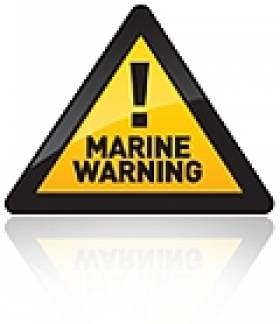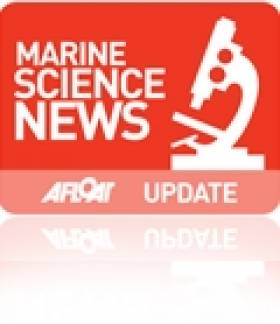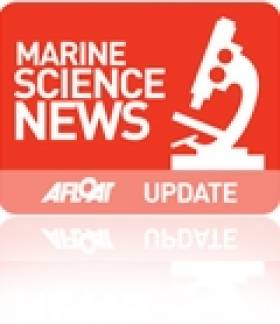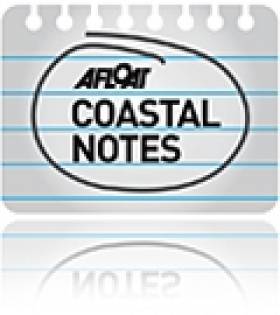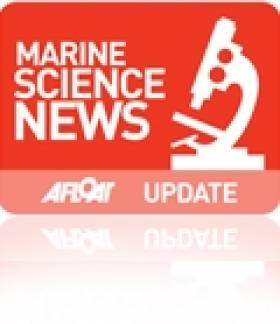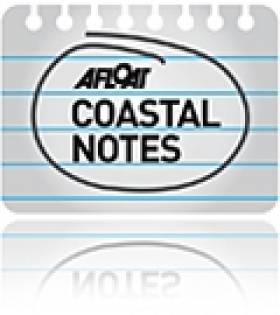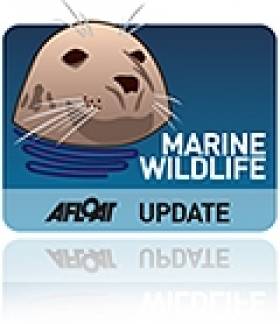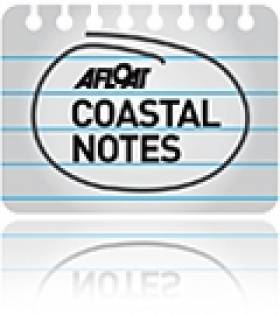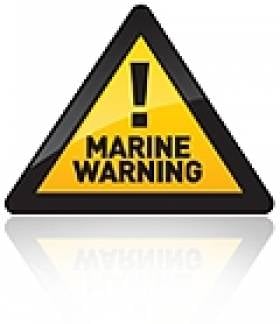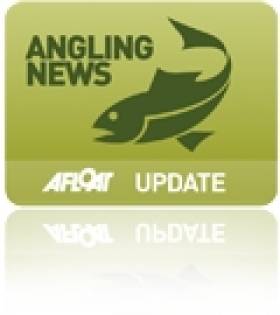Displaying items by tag: survey
#MarineNotice - The latest Marine Notice from the Department of Transport, Tourism and Sport (DTTAS) advises of a previously uncharted rock outside the approaches to Dingle's Fishery Harbour Centre.
The rocky outcrop or shoal was identified by the Geological Survey of Ireland (GSI) vessel RV Geo recently, and appears to be part of the shoreward extension of the Crow and Colleen-oge Rocks.
Full details of its depth and position are included in Marine Notice No 37 of 2013, a PDF of which is available to read or download HERE.
In other news, the Marine Institute is conducting a pipeline and platform superstructure (or 'jacket') survey in the Celtic Sea.
The survey, on behalf of Kinsale Energy Limited, was scheduled to commence last Monday 22 July and will continue till Friday 30 August.
Works are being conducted by the MV Granuaile (Call sign EIPT) which is carrying out underwater operations using a remote operated vehicle (ROV) making 0.4 to 0.7 knots over the ground. The vessel is listening on VHF Channel 16 throughout the project.
All vessels, particularly those engaged in fishing, are requested to give the MC Granuaile a wide berth and keep a sharp lookout in the relevant areas. Full details of co-ordinates are included in Marine Notice No 36 of 2013.
Canadian Ambassador Boards RV Celtic Explorer at Galway Docks
#marine science – Irish and Canadian scientists join forces on a transatlantic survey onboard the Irish National Research Vessel, RV Celtic Explorer which sets sail today for the Labrador and Newfoundland Seas to carry out fisheries research.
Canadian Ambassador to Ireland, his Excellency, Loyola Hearn, boarded the RV Celtic Explorer at Galway Docks today to meet the Irish and Canadian collaborators in this transatlantic expedition from Galway to St. Johns, Newfoundland.
The survey led by Dr George Rose, Director of the Centre for Fisheries Ecosystems Research at the Fisheries and Marine Institute of Memorial University of Newfoundland (MUN), is multidisciplinary and will gather oceanographic data as well as acoustic recordings across the entire North Atlantic, building on work done on the two previous transatlantic surveys in 2011 and 2012. Canadian scientists will be joined onboard by Irish researchers from National University of Ireland, Galway (NUI Galway) and Mayo Institute of Technology (GMIT). Sheena Fennell, NUI Galway will carry out oceanographic monitoring throughout the journey to St. John's and will collaborate with Dr Rose on the acoustic data collected during the transatlantic trip. The aim is to search for 'hot spots' of smaller mid-water fish, such as lanternfish and begin to understand their distribution.
The vessel will research the cod stocks on the Flemish Cap en route to Newfoundland and Labrador before completing a large scale survey for cod and capelin in Newfoundland and Labrador waters. As a former Minister of Fisheries and Oceans, Loyola Hearn was particularly interested to board the RV Celtic Explorer ahead of it transatlantic passage to Newfoundland and Labrador. Mr. Hearn said, "We are now seeing growth in the fish stocks off Newfoundland and Labrador, and surveys like this provide essential information on the sustainability of fish stocks. The potential for increased involvement both in ocean research and the fishing industry between Ireland and Canada is now being realised. The Celtic Explorer is an ideal ship to carry out this research which will be of such great benefit to both countries."
Dr. Peter Heffernan, Chief Executive, Marine Institute said, "This transatlantic collaboration is hugely important for Ireland and builds on the strong relationship between Ireland and Newfoundland and Labrador established since the first Newfoundland survey on the Celtic Explorer in 2011. It will allow Irish researchers to forge strong links with their Canadian counterparts as part of a wider international ocean observatory initiative. This is particularly relevant in the context of the European Union's Atlantic Strategy and the emerging Action Plan, which is on course to be completed during the Irish Presidency of the EU.
"This type of multidisciplinary research and international cooperation is essential to achieving healthy marine ecosystems – which is a key goal of the Government's Integrated Marine Plan for Ireland - Harnessing Our Ocean Wealth, published in 2012. We are delighted with this collaboration with our Canadian partners".
Dr. George Rose reiterated those sentiments, saying "This voyage continues to have tremendous value to both Irish and Canadian researchers, and contributes significantly to the knowledge base and prosperity of the Newfoundland and Labrador fisheries. I look forward to the continuance of this collaboration".
During the passage, an observational platform that sits on the seabed called a benthic lander system, will be deployed at a depth of 800-900m in a canyon on the continental shelf off the Irish Coast to measure turbidity, flouresence, temperature, salinity, water column and near seabed currents. The lander will remain in the canyon until June when it will be recovered during an NUI Galway led biodiscovery survey onboard the Celtic Explorer.
A Galway and Mayo Institute of Technology researcher will monitor cetacean activity during the passage across the Atlantic to Newfoundland and Labrador.
University College Cork graduate, Rachel Morgan will join the survey through the Training Through Research Surveys Scheme, run by the Strategic Marine Alliance for Research and Training (SMART). The programme gives young Irish researchers an opportunity to gain an invaluable experience on multidisciplinary surveys.
The survey is primarily funded through charter of the national research vessel by the Fisheries and Marine Institute of Memorial University. It builds on a strong collaborative relationship between the Irish Marine Institute and the Marine Institute of MUN and facilitates a transatlantic multidisciplinary survey which brings together experienced Irish and Canadian oceanographers, marine biologists, benthic ecologists, as well as young researchers who will gain invaluable experience onboard this survey.
Participation of third level students is funded though the Strategic Marine Alliance for Research and Training (SMART) programme.
Researchers Ask For Help In Global Plankton Survey
#MarineScience - Researchers at a UK university are hoping to enlist seafarers to help conduct one of the world's biggest studies of ocean plankton.
BBC News reports on the project by the Marine Institute at Plymouth University, which hopes to encourage fishermen and sailors alike to take part in its survey in Britain's coastal waters - including the Irish Sea - and far beyond.
Anyone participating in the study must drop off the side of their vessel an apparatus called a Secchi disk - a 30cm-wide flat white disk attached to a tape measure or a rope, and weighted from below by a small 200g weight.
When the disk disappears from view, that level is known as the Secchi Depth, which measures the turbidity of the water, which in turn is influenced by the amount of the microscopic marine wildlife in the water column.
Seafarers are being asked to record the Secchi Depth and upload to researchers via a mobile app for iOS and Android devices in order to build a complete picture of plankton activity in the world's oceans.
"If we can just get a small percentage of the global population of sailors involved, we can generate a database that will help us understand how life in the oceans is changing," said project leader Dr Richard Kirby.
"It would help us learn much more about these important organisms at a crucial time when their habitat is altering due to climate change."
BBC News has more on the story HERE.
Extend Plastic Bag Levy to Sanitary Waste Says Coastwatch
#COASTAL NOTES - Coastwatch Ireland has urged for the plastic bag levy to be applied to sanitary products, balloons, lighters and other disposables that can be harmful to Ireland's marine wildlife.
The Irish Times reports on the call from the environmental network's Irish director Karin Dubsky at yesterday's launch of the findings from the recent 25th anniversary survey of Ireland's coastline.
As reported on Afloat.ie in October, the month-long volunteer survey took in use of land and shore, water quality, pollution levels and marine wildlife and plantlife.
More than 18,000 drinks containers - mostly plastic bottles - were found by volunteers on the 3% of Irish coastline sampled for the survey.
And despite a 50% fall over 14 years, sanitary waste such as condoms and dirty nappies were still a problem on beaches.
While suggesting a broadening of the plastic bag levy, Dubsky also called for a 'deposit on return' scheme for drinks containers to reduce letter and encourage recycling.
The survey also reported more positive news, with nitrate levels in outflow waters below detection in half the surveyed areas for the first time since 1993.
The Irish Times has more on the story HERE.
New Survey Technology Shines Light on Donegal Shipwrecks
#marinescience – A survey by a Marine Robotics Team from University of Limerick (UL) using the UL built Smart ROV Latis has shed new light on two shipwrecks off the coast of Donegal, the S.S. Empire Heritage and the S. S. Empress of Britain.
The survey onboard the RV Celtic Explorer led by Dr. Daniel Toal, University of Limerick (UL) captured photo images as well as multi-beam sonar images at two archaeological sites. The survey planning drew on the knowledge of technical diver Dr Ger Dooley, a member of the survey team who has dived on many wrecks on the northern approaches off the Donegal Coast.
High resolution sonar imaging was used to create new images of the S.S. Empire Heritage, a cargo ship which had been carrying dozens of Sherman Tanks when it was torpedoed and sank in 1944 with the loss of 113 lives. New images of the S. S. Empress of Britain, a passenger liner, thought to have been carrying gold when it sank in 1940 were also created.
The S. S. Empire Heritage now lies at a depth of 70 metres, 15 miles north-west of Malin Head and the survey captured images of the cargo of tanks, originally destined to fight in WWII, now scattered across the seafloor.
High resolution image of the S.S Empress of Britain
The S. S. Empress of Britain, a 42,000 ton, 230 m passenger liner lies at 160 metres, 40 miles north-west of bloody foreland and is believed to be the largest ship sunk by a U-boat. A salvage operation carried out on the wreck in 1995 on suspicion that the ship had been carrying a large cargo of Gold from Africa destined for America reported finding the Empress upside-down in 500 feet of water. The salvagers reported breaking into the strong room only to find a single skeleton and no gold. It was suspected the gold was unloaded while the Empress was on fire and its passengers were being evacuated. However, the high resolution sonar image which was taken during the recent ROV dive shows the wreck listing on its side, not upside-down as reported by the earlier salvage operation.
High Resolution image of the S.S. Empress of Britain
The aim of the survey was to trial ROV technology developed by UL for a variety of marine applications including high resolution sonar imaging of ship wrecks for archaeological records, demonstration of ROV Latis' precision underwater navigation and dynamic positioning capabilities to the Irish Coast Guard for Search and Rescue, as well as trialling a 'daughter ROV' or 'fly-out out mini ROV' for hull penetration and internal inspection where the larger ROV Latis cannot venture.
Dr Toal explained "In order to acquire high resolution sonar images the sonar instruments must be flown close to the ship wreck. Building a composite sonar image of a wreck with large numbers of sonar pings requires precise knowledge of the position and orientation of the ROV platform during the imaging transect. The ROV Latis is equipped with state of the art under water positioning, navigation and auto pilot control systems which makes it an ideal platform for this high resolution survey work."
When poor weather conditions during the six day survey prevented operation of the ROV, the team moved to the sheltered waters of Lough Swilly where they tested a new low cost terrain referenced navigation system for unmanned vehicles developed by the Marine Robotics Research Centre at UL.
The survey was supported by the Marine Institute through the 2012 Ship Time Programme as part of the Sea Change Programme funded under the National Development Plan 2007 -2013. The shipwrecks surveyed were previously mapped from the sea surface by the Geological Survey of Ireland and Marine Institute during the INSS and INFOMAR national seabed mapping programmes.
Further details and information on the shipwrecks are available in the new book published this week by government publications, entitled "Warships, U-Boats & Liners".
Rare Finds in 25th Anniversary Coastwatch Survey
#COASTAL NOTES - The remains of a leatherback turtle were among the finds reported by 'citizen scientists' taking part in the Coastwatch survey of Ireland's coastline, according to The Irish Times.
As previously reported on Afloat.ie, the 'eco audit' marked the 25th anniversary of the first nationwide Coastwatch survey, taking in use of land and shore, quality of inflow water, waste and pollution, and selected coastal and marine wildlife and plantlife.
The survey period concluded at the weekend with an event at the new Tralee Bay Wetlands centre attended by Minister for Heritage Jimmy Deenihan, close to one of the rare discoveries by survey volunteers in the shape of honeycomb worm reefs.
The Irish Times has more on the story HERE.
Isle of Man Begins Seal Pup Survey
#MARINE WILDLIFE - The Manx Wildlife Trust has commenced its annual survey of seal pups on the Calf of Man, as Isle of Man Today reports.
Volunteers will be on watch at the island nature reserve, off the southwest coast of Man proper in the Irish Sea, for the next four weeks to develop a complete picture of the area's grey seal pupping season.
As of Sunday 14 October, some 14 seal pups have already been born, which is a few less than last year, according to marine officer Eleanor Stone - though she notes "there are still many pregnant females around, just waiting for their time to give birth".
Stone, who is volunteering on the first week-long shift, said the trust has already spotted six seals recognised from previous years, and it is expected many more will be returning to the sheltered beaches of the islet.
Isle of Man Today has more on the story HERE.
Public Urged to Join Coastwatch Survey
#COASTAL NOTES - Coastwatch is appealing to the public to get involved in a country-wide 'eco audit' of Ireland's shoreline.
The Irish Times reports that the survey marks the 25th anniversary of the first Coastwatch audit of the coastline of the island of Ireland.
Coastwatch's latest survey got under way this week. It takes in use of land and shore, quality of inflow water, waste and pollution, and selected coastal and marine wildlife and plantlife.
Co-ordinator Karin Dubsky said: "This is citizen science which empowers people and is relevant locally and internationally to improve coastal zone management, highlight issues and implement the new EU marine directive."
The survey and guide notes can be downloaded by anyone from the Coastwatch website, and completed questionnaires can be submitted by post or online.
Marine Notice: Firing Exercises Off Gormanston & Survey Equipment in Galway Bay
#MARINE WARNING - Seafarers are advised to steer clear of upcoming surface-to-air firing exercises off north Co Dublin, as well as a survey equipment deployment operation in Galway Bay.
Marine Notice No 51 of 2012 outlines that the Defence Forces will be conducting live surface-to-air firing practices at Gormanston Air Defence Range in Co Meath this week on Wednesday 19 and Thursday 20 September from 11am to 3pm each day.
Similar to the exercises conducted this past July, an exclusion zone will be established comprising the land, air and sea areas contained within a radius of three nautical miles centred on Gormanston Aerodrome, with an additional segment centred on the aerodrime and bearing of 015 degree true through Mosney rail station and 106 degrees true through Gormanston rail station seawards for a distance of 10 nautical miles.
The exclusion zone D1 will be enforced by a Naval Service vessel. All mariners in the area are required to remain outside the exclusion zone while the range is active, and are recommended to carefully monitor the radio navigation warnings that will be broadcast throughout the firing period.
Meanwhile, in Galway Bay two Benthic Lander devices will be deployed between 24 and 26 September, to be recovered between 29 and 31 September.
The national research vessel R/V Celtic Voyager (call sign EIQN) - which will host the Science@Sea marine science training scheme this coming November - will carry out the deployment of the 2-3-metre high devices that will monitor sediment movement, current speed and direction, and wave motion at depth.
All vessels, particularly those engaged in fishing, are requested to give the vessel and wide berth of at least 500 metres and keep a sharp lookout.
Details of relevant co-ordinated are included in Marine Notice No 52 of 2012, a PDF of which is available to read or download HERE.
Dublin Tackle Shop Undertakes National Bass Survey
#ANGLING - Henry's Tackle Shop in Ballybough is conducting a countrywide survey to determine the extent of the decline of bass activity around Ireland's coastline.
According to the shop's Henry Lynam and Pat Daly, the last two years have seen some unusually low bass activity on many coasts.
As part of their national survey, they are asking anglers to return log book pages to measure the quality of the bass fishing across Ireland this year.
"Bass are a species protected by by-laws," they wrote on their blog. "The quality of protection afforded by these laws has varied but have mainly been sufficient to help the stock recover from a serious crash in the 1980s to a reasonable level over many years.
"We fear now that with the double edged sword of financial stress increasing the number of poachers and decreasing budget for fisheries protection that perhaps bass are coming under pressure again."
Other factors they note include the year's weather extremes and the large and the unusual northward movement of local plankton.
"Whatever the cause we can only observe and record the resulting facts for presentation to someone who is in a position to act."
The warning comes as calls are being made to reopen Ireland's bass fisheries for commercial fishing. Anglers are asked to return their bass angling log book pages at the end of the bass fishing season to Henry's Tackle Shop, 19 Ballybough Road, Dublin 3.



























